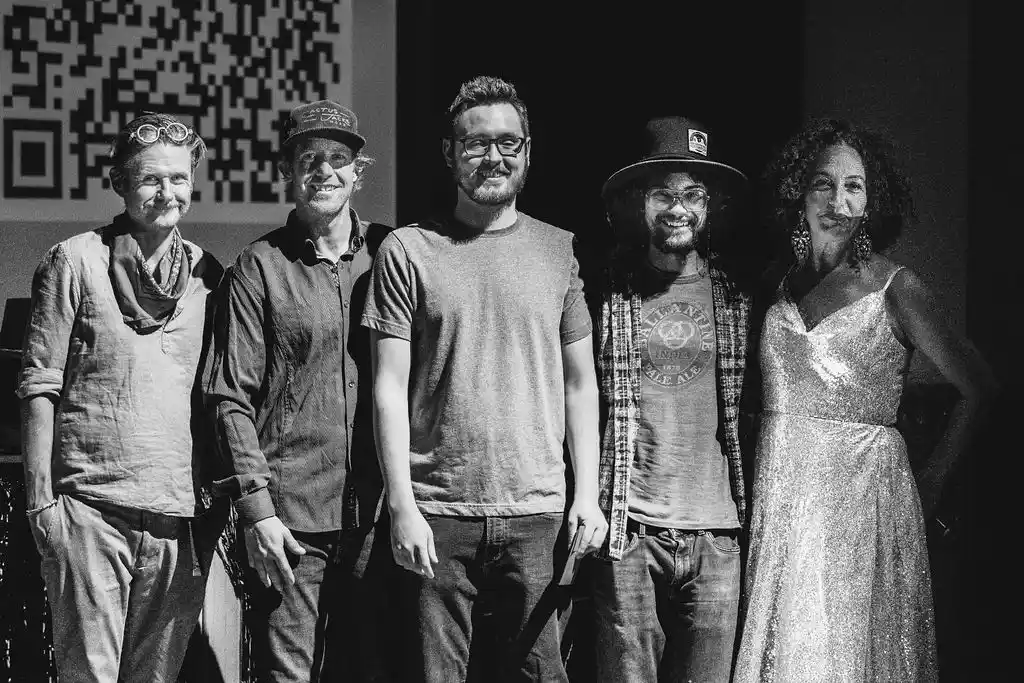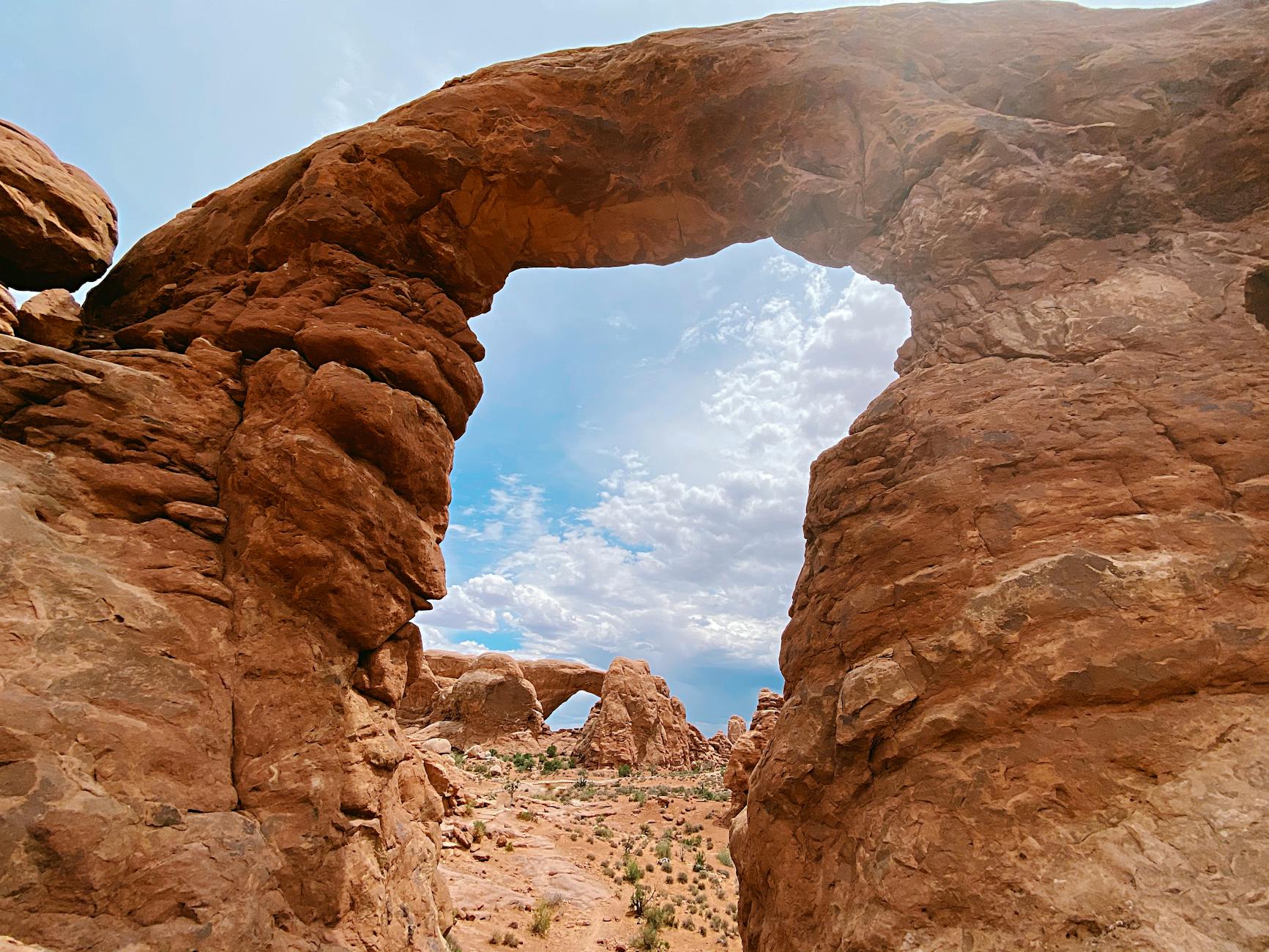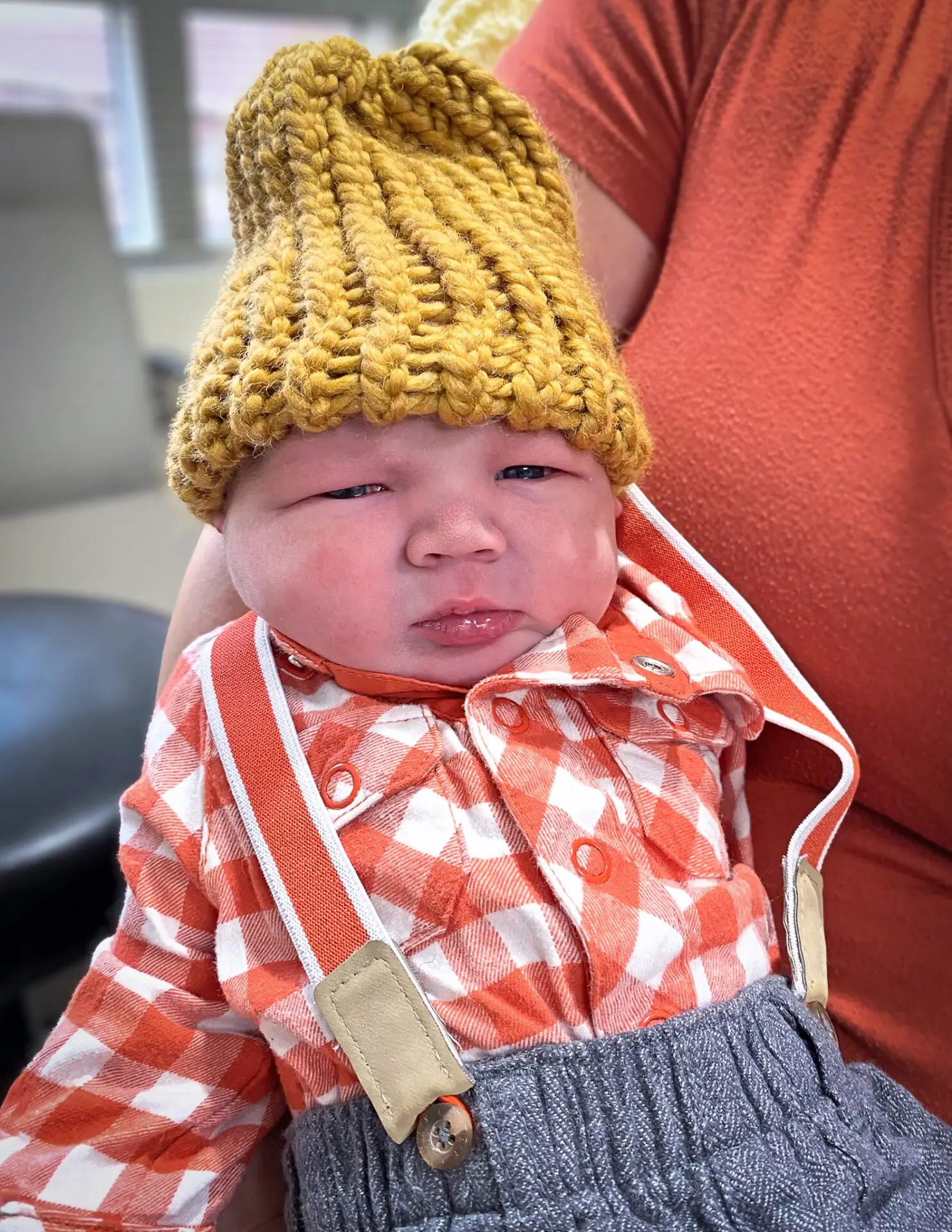Hayley Knouff was born and raised in Moab. Just a year and half ago, she decided to buy a business in the city.
Knouff bought the Desert Sun Pottery Studio in the fall of 2018 and threw her time and energy into developing the business, renovating the building and launching a successful Kickstarter to fund new programming.
Everything pointed to the success of a space that would serve the needs of the Moab arts community and become a viable career for Knouff. Instead, this week Knouff has opened the studio to one member at a time to allow them to finish pieces in progress and pack up their tools and materials. She will vacate the building at the end of June.
The coronavirus pandemic and resulting economic stress proved too much for the business. To follow public health guidelines and mitigate the risk of transmitting infection, the studio would have to operate at a greatly reduced capacity that would not generate enough income to sustain itself. Knouff recently made the tough decision to announce to her members that Desert Sun will be closing its doors for good.
A passion becomes a profession
As a member at Desert Sun before she purchased the businesses, Knouff learned skills like how to make slips and glazes and how to load the kiln from the founder and then-owner of the studio, Barb Gregoire. The purchase of the business came with all the studio equipment, including two kilns, several pottery wheels, glazes, clay, and tools. Knouff also inherited the rented studio space, a warehouse on south Highway 191 that also houses the Moab nonprofit Canyonlands Field Institute.
“The first year of business was really getting my bearings and trying to think about what direction I wanted to take things overall,” Knouff said. She researched pricing systems, scheduling, and class offerings at other communal studios.
“From all that data that I learned from all those examples, I put together something that I thought would work really well in Moab and something that really fit the need for artists here,” she said. “Part of that was trying to think about how to keep things really affordable because I’m very familiar with the local economy and seasonality and the cost of living.”
One thing she determined from her research was that in order for the business to grow, she would need to offer more consistent and larger classes. For that, she needed more pottery wheels and more space to keep them. She launched a Kickstarter campaign in October of 2019, offering handmade pots and printed tee shirts in exchange for contributions.
“We had a lot of support through the Kickstarter,” Knouff said. “Not just financial, but also a lot of people getting excited about the space.”She noted that many contributors gave money without asking for any items.
Knouff raised $16,805 through the campaign and invested the money in new pottery wheels and reorganizing the studio to make the space more efficient. During the winter of 2019-2020, while she was restructuring, the studio was mostly dormant. Then in January of 2020, Knouff offered a trial run of classes with the newly expanded capacity.
“It went really well,” she said. “We were really just starting to get the ball rolling on the new vision of the studio.”
Making space for art studios
In spite of its small size and isolated location, Moab has championed the arts through public sculpture, music festivals, and community events that feature poetry, fiction, music, and visual arts. Makeda Barkley, assistant director of the Moab Arts and Recreation Center and a member of the Moab Arts Council, said that both the MARC and the community deeply valued the Desert Sun Pottery Studio.
“The MARC can’t really fill that gap because of the space needed for ceramics,” Barkley said, lamenting the loss of Desert Sun for community artists.
Amateur artists often don’t have space to spare for pursuits like ceramics and other mediums that require a lot of equipment or supplies. Knouff pointed out that without communal creative spaces, many part-time or hobby artists wouldn’t be able to practice and produce.
“For a lot of people it’s the difference between making pottery and not,” she said. “Or making any art, really, because there aren’t that many shared creative spaces in town.”
“The whole concept of having a shared community studio is that we all share the equipment when maybe not a single one of us would be able to afford the kiln in our own home,” Knouff continued.
“We can’t afford the price of the kiln; we also can’t afford the space it takes up in our house, we can’t afford the commitment to make the most of that space—especially people who are working seasonally. It’s hard to justify a home studio when you know you’re only going to use it for four months out of the year,” she said.
The MARC is planning to launch an “open studio” space where makers and artists of any kind can drop in and work. It wouldn’t necessarily have pottery equipment, but it would be an avenue for artists in need of workspace.
However, that concept has been delayed because of social distancing concerns and layoffs due to city budget problems exacerbated by the coronavirus. Barkley said the reason the MARC is still able to operate at all with the current city budget cuts is by finding grant funding from other sources.
“We’re doing our best to find funding elsewhere so the city doesn’t have to make any hard decisions,” she said, noting that federal COVID-19 relief packages have had some allocations for the arts, and that the MARC has support from the community.
“There’s a lot of people that want to support the arts right now because they know that the arts are the first ones to take a cut,” said Barkley.
Emergency help fails to come through
When the Southeast Utah Health Department first issued its March restrictive order, Knouff was optimistic.
“At first it felt like an opportunity to have the studio all to myself, actually,” she recalled. With all the energy she had been putting into the business, she has had little time over the past year to create her own pottery, and she took advantage of the “closed” sign on the door to sit back down at the wheel. At the same time, she began researching financial relief options.
“Information on that was changing almost daily,” she said. “So I was waking up every morning and reading the news and digging around the internet to find answers about what opportunities were opening up for small businesses.”
Knouff applied for an Economic Injury Disaster loan, which for the first $10,000 was actually a grant that didn’t need to be repaid.
“I have yet to hear back from that,” she said, though she did see a $1000 deposit in her bank account with no explanation and no communication from the Utah Small Business Administration, which is distributing the funds. Knouff later found out that the advance is being distributed in units of $1000 per employee, up to $10,000. Since she is the sole proprietor and only employee of her business, she was eligible for just $1000.
“Even though I could show the need for a $10,000 grant, they didn’t evaluate it based on lost income, they evaluated it based on the number of employees. So I sort of fell into a blind spot as being a sole proprietor,” Knouff said.
Knouff also looked into the Payroll Protection Program, which has helped many businesses keep their employees on staff even with reduced operations. However, Desert Sun again didn’t fit the mold. Seventy-five percent of the PPP grant must be spent on payroll, but Knouff’s largest expense by far was her rent for the studio space.
On top of that, she had been paying herself next to nothing for the first year of business, opting instead to invest extra income back into the studio for the first year to help it thrive. The PPP calculates the amount of money distributed to businesses based on the amount they spend on payroll.
“Paying myself a salary was very low on my priority list for the first two or three years,” Knouff said. “My income statements very much reflect that and the maximum amount that I would have qualified for was $2,000, which only would have covered expenses for a month and a half.”
All businesses affected by economic slowdown
Still, Knouff was holding out hope that she would find a way to operate through the shut-downs. She wrote a new member contract that required studio users to agree to social distancing, wearing a mask when others were in the studio, and helping to keep surfaces sanitized. But she didn’t end up opening and implementing that contract.
Members who were laid off or working reduced hours began asking when Desert Sun would be open, so they could spend their extra free time making pottery.
“In some ways, my business might be booming right now,” Knouff said ruefully.
But the more Knouff thought about her business model and her clientele, the less comfortable she felt with the idea of restarting.
“Half of them work tourist industry jobs and interact directly with the public,” Knouff said of the studio members, “and the other half of them are retirement age.”
In other words, a mix of those with high exposure potential and those at the highest risk of severe symptoms from COVID-19.
Knouff realized that even though her business is mostly geared toward Moab residents, the tourist-dependent nature of the local economy affects everyone.
“Even if I’m not directly employed in the tourist industry, I’m only one step away,” Knouff said. “That was sort of the first realization that ‘Oh no, it is going to impact me, I’m not that far from the implications of our tourism economy.’… It affects the safety of us all. No matter what your business model is, if your customers are interacting with tourists, then your work environment or your place of business is just as at risk as a tourist shop.”
The economic slump also affects everyone. Even businesses that are able to continue operating with new protocols will have to spend time and energy on devising adaptations, Knouff said, and they will still lose revenue from canceled events, reduced capacities, fewer tourists bringing money to town and fewer disposable dollars in the pockets of Moab locals.
Knouff sadly decided that the studio couldn’t realistically survive through the pandemic. She has applied for the Commercial Rental Assistance Program, which she said might help, though she hasn’t yet heard back after submitting her application several weeks ago. She isn’t counting on it.
sub: Silver linings and future hopes
“I’m an artist, at the end of the day, and while I just built this entire business around supporting other artists and I let my own practice lay dormant, this is, I think, a hidden opportunity for me to focus on my own work,” Knouff said of the closure of her studio.
She’ll keep at least one of the kilns and one or two of her pottery wheels to set up a personal workspace in her grandparents’ garage. For now, she’s holding on to the five wheels she bought with funds from the Kickstarter campaign.
“Maybe it’s just me being stubborn, but I’m not willing to sell them,” she said. Instead, she is thinking of renting out the wheels to members who have space to set them up in their own homes. Home potters could bring their work to Knouff to be fired for a fee.
“They’ll have to transport their work, which is not ideal for a potter because it’s so fragile, but a lot of potters who don’t have community spaces do it that way,” said Knouff.
She also wants to continue nourishing the Moab ceramics community and supporting developing artists. She plans to create a page with links to online learning resources on her website, and maintain connections with studio members, possibly offering a place where they could sell their work online.
When Desert Sun was thriving, Knouff said she would often direct blossoming artists to Moab Made, which retails local artists’ work on busy downtown Main Street. Items sell fast during the high tourism seasons. Knouff herself sells much of her work through Moab Made.
“It’s well worth the commission that Moab Made takes just to have our work exposed on Main Street to all the visitors,” Knouff said. She maintained a small gallery with work for sale in the studio on south 191, but few visitors ventured out that far. She said an item that might take two years to sell in the Desert Sun gallery could easily sell in two weeks at the downtown Moab Made shop.
“It’s a great kind of symbiosis that my studio has formed with Moab Made,” Knouff said. “That won’t go away for any of us. She’ll continue to sell people’s work.”
Knouff also hasn’t abandoned hope of one day being able to open Desert Sun again. She said one reason she decided to close now is to cut her losses and conserve resources for another possible push in a more favorable climate.
“I definitely want to keep that door open,” she said.
“I have new ideas every day, now that I’ve accepted the new fate. I am hopeful overall. It’s taken a lot of grieving to get to this point, but I think we can all figure out how to stay connected,” Knouff said.
Community art space shutters due to pandemic
“No matter what your business model is, if your customers are interacting with tourists, then your work environment or your place of business is just as at risk as a tourist shop.”
– Haley Knouff





